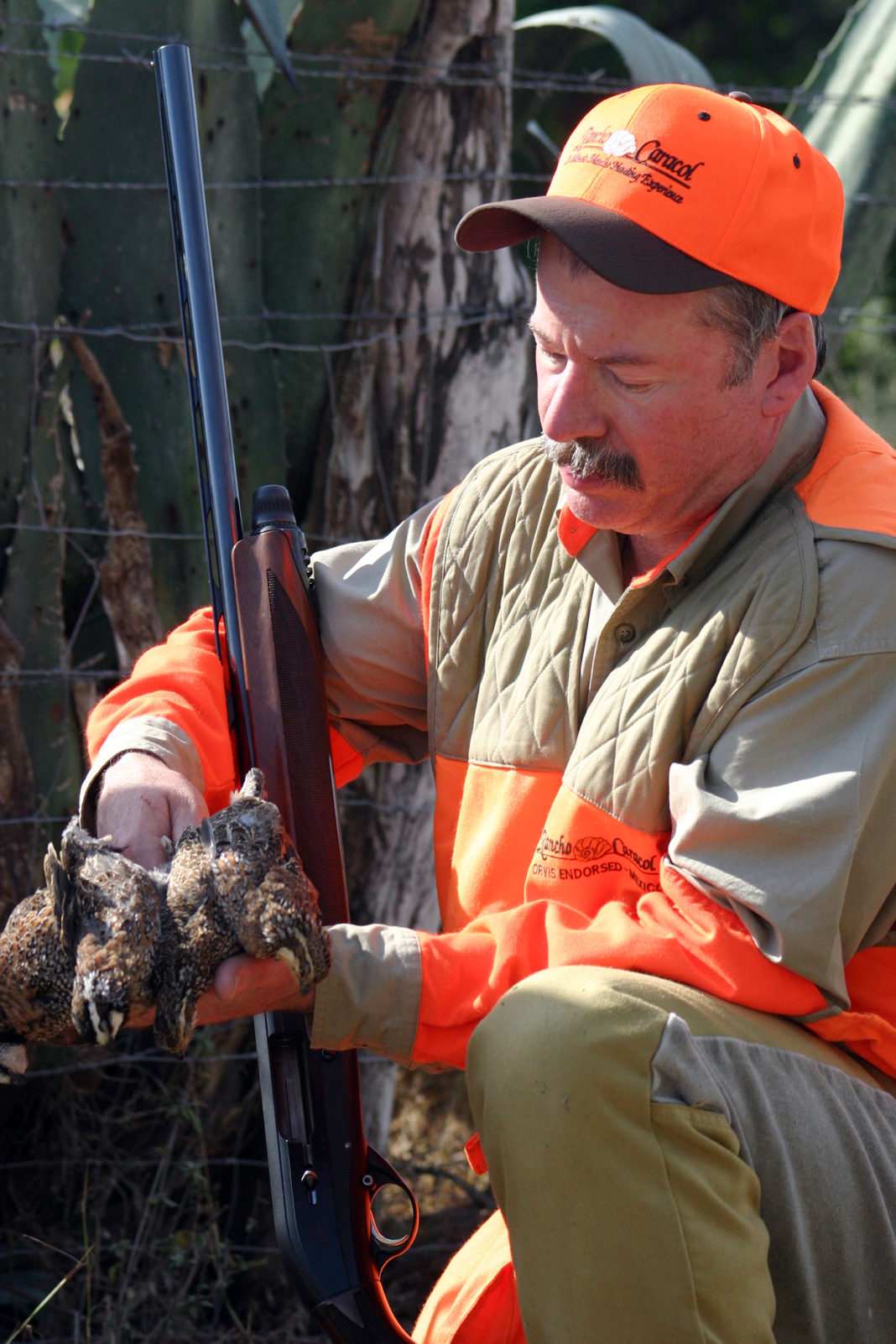Texas quail hunting conditions have been tough during the past decade, with widespread drought and other factors wreaking havoc on bird populations.
However, the 2016-17 hunting season has shaped up to be one for the record books in the typical hot beds for bobwhites. More importantly, the past two years have provided a nice rebound for a number of quail species, including blue quail, something that has Texas Parks & Wildlife Department biologists excited.
Dave Morrison, small game program leader for TPWD, noted that 2015 was fantastic in terms of quail production conditions and subsequent quail numbers. He also said that just like last year, there was exceptional moisture levels at the right time to be a boon for the overall quail surveys conducted annually statewide.
“You look at what happened last year with such excellent rainfall and moisture levels, quail numbers just shot through the roof. And then we’re looking forward to another extraordinary season this year,” Morrison noted. “The benefit of all that rainfall depends where it occurs. You look at the Gulf Coast prairies and in regards to quail it’s an inverse relationship. The more rain you get there, the worse off it is for quail. But when you look at South Texas, the Rolling Plains and the Panhandle, that timely rain has them doing well, especially since we’ve had a mild spring. I suspect that in many of the quail strongholds the birds are going to respond nicely.”
Quail hunting has been labeled as a boom-or-bust proposition with the greatest strongholds occurring on the western edge of key bobwhite habitat, but with good rainfall producing excellent nesting cover and abundant forbs and insects, Texas as a whole is set up for another bumper crop of birds.
“A friend of mine was spring turkey hunting up in the Panhandle and he said he couldn’t kill a turkey because the quail wouldn’t be quiet,” Morrison said. “It’s been unbelievable the number of birds they’re seeing in some places like the Rolling Plains and South Texas. What we’re seeing now is just a continued building on what we did last year when it was excellent.
“Nothing can fix problems like a good rain, especially when it comes to ground-nesting birds like turkey and quail.”
Texas quail surveys in 2015 showed phenomenal numbers of birds in traditional hot spots as well as in other noted strongholds. The prime example is the Rolling Plains, the area of the state that includes a variety of excellent habitat and spanning from Lubbock and San Angelo on the western edge to the Red River basin in the east. The average number of bobwhite quail observed per survey route was 38.3 compared with 7.5 in 2014 and representing the highest figure since 1992-93, another boom year for birds, according to TPWD data. In fact, the 2015 count is the lone one since 2008 that reached into double digits in the Rolling Plains.
South Texas, another bastion for bobwhites, also saw phenomenal bird numbers. The 2015 survey showed 21.1 birds per route, a substantial increase over the previous 11.6. The larger count was the highest in 15 years, with the 2005-13 surveys all ending in the single digits.
While bobwhites dominate the quail hunting landscape in Texas, another species out west also has benefited from better habitat conditions. Scaled quail, like bobwhites, can rebound quickly under optimum conditions, something they had in 2015. Like the bobwhite counts, scaled quail figures in the Trans-Pecos region were off the charts last year, rising from 6 birds per route in 2014 to 28.4. That represents the highest scaled quail figure in that hunting hot bed since 2007, while it also is the first year in five that the count hit double figures.
The agency designed the roadside quail survey in 1976 to track quail production trends at the statewide and regional levels. The 20-mile routes are randomly assigned and many counties may only have one route. Biologists record the number of singles, pairs, coveys and number of quail within coveys for each quail species by 1-mile increments. The relative age of broods also is recorded.
It should be noted that the counts are not replicated within a given year. For this reason, the number of quail observed during any single observation is not necessarily indicative of quail abundance in the general area of the route. Essentially, it provides a good baseline for biologists to estimate how many quail may be on the range. Observing a few quail along a route one year and a huge number the next doesn’t necessarily mean there are more quail in that particular area, biologists noted.
Quail season opens statewide on Saturday, October 29 and ends Sunday, February 26, 2017. The daily bag limit for bobwhite, blue and Gambel’s quail is 15, and the possession limit is three times the bag. Legal shooting hours for all quail are 30 minutes before sunrise to 30 minutes after sunset.
Rolling Plains Quail Research Ranch seeks quail crop contents
The Rolling Plains Quail Research Ranch in Fisher County is soliciting crop contents of quail harvested across the Rolling Plains (including in Texas and Oklahoma) in an attempt to build a comprehensive seed collection of plants eaten by quail.
Hunters are asked that as you clean birds, dissect out the crop and empty the contents into an empty shotgun shell box so they will dry out, then tape the seams with duct tape. Do not put them in a plastic bag as they will mold.
At the completion of your quail season send the box and contents to RPQRR, P.O. Box 220, Roby, TX 79543-0220.




















